What Are Customer Service Reply Templates and Their Benefits
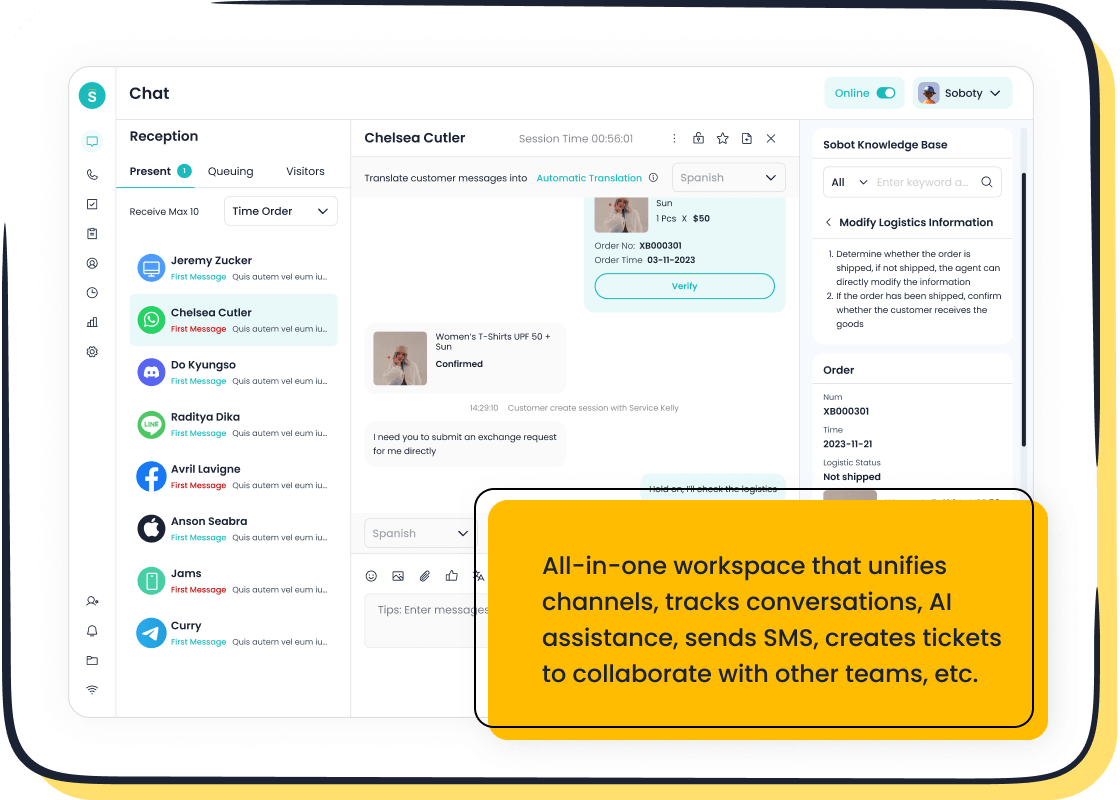
A customer service reply template is a pre-written response designed to address common questions or concerns. It helps you save time and ensures consistent communication. For example, when a customer asks about a refund policy, a template can provide a clear and quick answer. This improves customer satisfaction by reducing wait times.
Sobot enhances these templates with tools like Live Chat. It allows you to personalize responses while maintaining efficiency. Features like AI assistance and omnichannel support ensure seamless communication across platforms, making your customer service email more effective.
What Are Customer Service Reply Templates?
Definition and Purpose
A customer service reply template is a pre-written response designed to address common customer inquiries. These templates ensure that your team provides consistent and accurate answers, regardless of who handles the query. For example, when a customer asks about shipping policies, a template can deliver a clear and professional response instantly. This approach not only saves time but also enhances the overall customer experience.
Templates serve multiple purposes. They streamline communication, reduce the workload on your team, and improve response times. Studies show that businesses using response templates often see faster resolutions and higher customer satisfaction rates. For instance, Jetson reduced its first response time by 60% and resolution time by 30% by adopting templated responses. These results highlight the importance of templates in modern customer service strategies.
How They Work in Customer Service
Customer service reply templates function as a foundation for efficient communication. When a customer submits a query, your team can select a relevant template from a library of pre-written responses. These templates can be customized to include specific details, such as the customer’s name or order number, ensuring a personalized touch.
The process typically involves several stages. A customer raises a ticket, which is then assigned to an agent. The agent selects an appropriate template, modifies it if necessary, and sends it to the customer. This workflow ensures that inquiries are addressed promptly and professionally. For example, a front desk receptionist might use a welcome message template, while a sales manager could rely on a follow-up email template to nurture leads.
| Stage | Description |
|---|---|
| Complaint Handled by Front Desk | Initial handling of customer complaints. |
| Complaint Handling by Managers | Managers take over for more complex issues. |
| Review by Supervisor | Supervisors review the resolution process to ensure quality. |
Why Businesses Use Them
Businesses adopt customer service reply templates to improve efficiency and maintain consistency. These templates allow your team to handle a high volume of inquiries without compromising on quality. They also reduce the cognitive load on agents, enabling them to focus on more complex issues.
Templates are particularly valuable for repetitive tasks. For instance, Bagallery tripled its delivery efficiency by using response templates for common queries. Additionally, templates contribute to faster response times, which directly impact customer satisfaction. Research indicates that quicker responses lead to higher satisfaction rates, with bot-assisted chats achieving an average satisfaction rate of 87.58%.
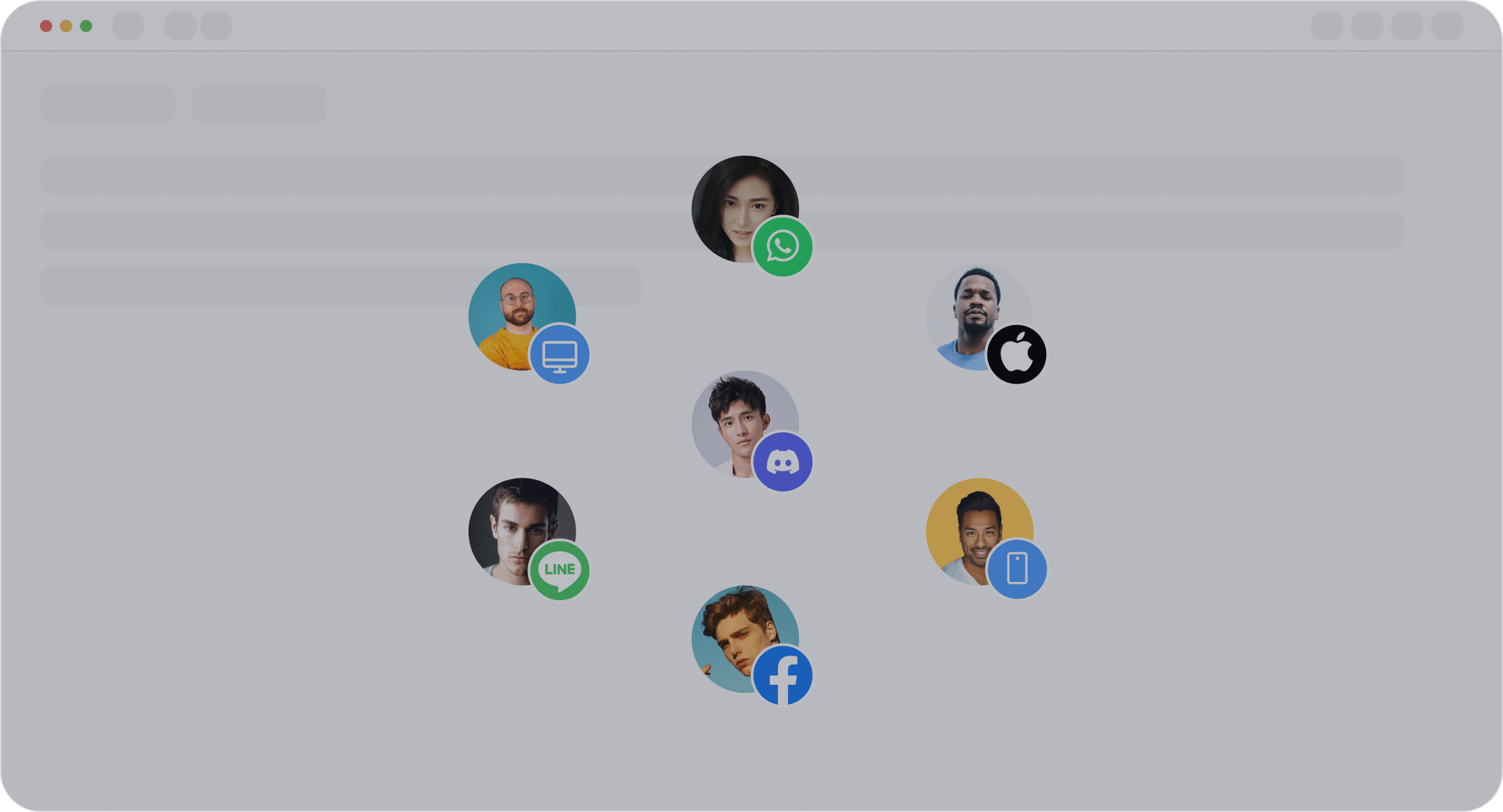
By integrating tools like Sobot Live Chat, you can further enhance the effectiveness of these templates. Features such as AI assistance and omnichannel support enable your team to provide seamless and personalized service across multiple platforms. This combination of automation and human interaction ensures that your customers receive the best possible experience.
Key Benefits of Customer Service Reply Templates
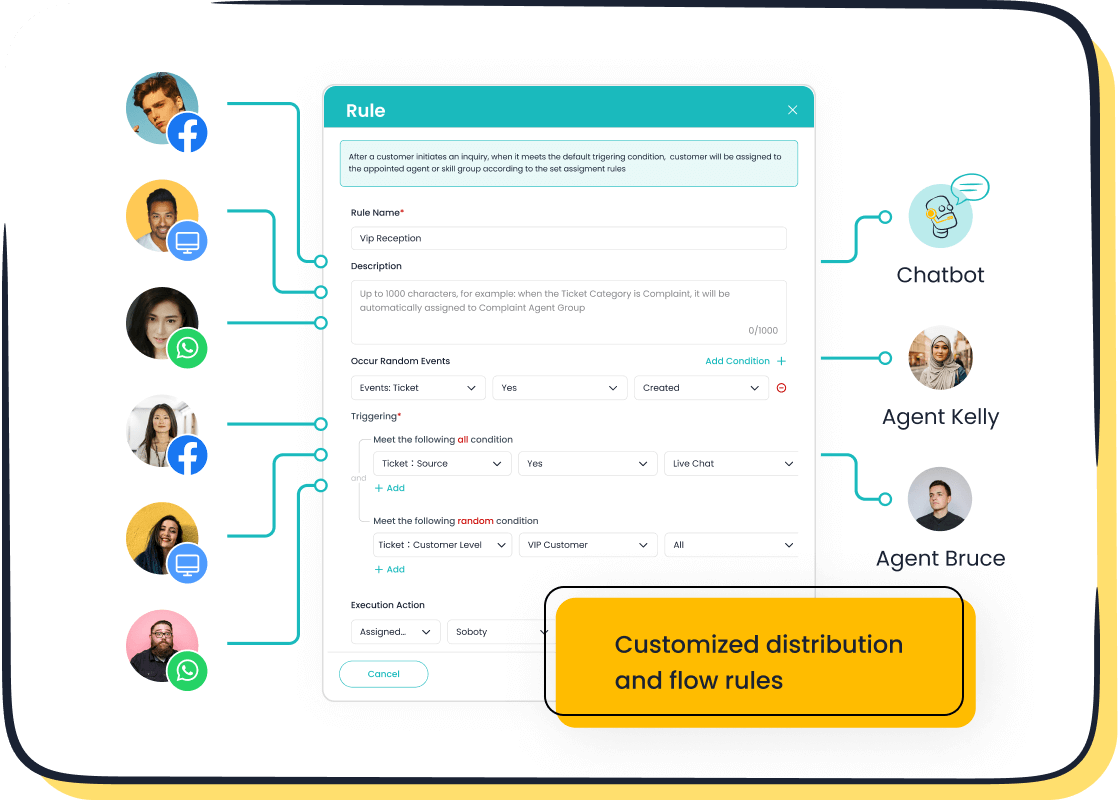
Improved Efficiency and Faster Response Times
Using response templates significantly boosts your team’s efficiency. These pre-written replies allow agents to handle inquiries faster, reducing the time spent drafting responses from scratch. For example, when a customer asks about a refund policy, a ready-made customer service email template ensures a quick and accurate reply. This approach minimizes delays and enhances productivity.
Operational metrics also validate this efficiency. For instance:
| Metric | Description | Calculation Method |
|---|---|---|
| Overall resolution rate | Measures how many tickets are resolved effectively. | Total tickets / Tickets solved |
| First contact resolution rate | Tracks cases resolved on the first attempt. | Resolved on first contact / Total incidents |
| Average ticket handling time | Indicates the time spent on each case. | Time per ticket / Average over a period |
By adopting customer support response templates, you can improve these metrics, leading to faster resolutions and better customer satisfaction.
Consistency in Communication Across Teams
Maintaining consistent communication is crucial for building trust. Customer service reply templates ensure that every agent delivers the same high-quality responses, regardless of their experience level. This consistency strengthens your brand voice and avoids confusion for customers.
Real-world examples highlight this benefit. XYZ Sales Agency, for instance, created email templates for different sales stages. These templates addressed common objections and encouraged engagement. As a result, the company saved time, improved messaging consistency, and achieved higher conversion rates. Similarly, ABC Corporation implemented clear communication guidelines and automated repetitive tasks, ensuring uniformity across all customer service emails.
When you use email response templates, your team can focus on delivering a seamless customer experience while maintaining professionalism.
Enhanced Customer Satisfaction and Trust
Fast and consistent responses directly impact customer satisfaction. Customers value quick resolutions and clear communication. By using customer service automation tools like Sobot Live Chat, you can integrate templates with AI assistance to personalize responses without sacrificing speed. This combination builds trust and loyalty.
For example, handling complaints becomes easier with pre-written customer complaint response templates. These templates ensure that your team addresses issues empathetically and professionally. A well-crafted email customer service reply can turn a dissatisfied customer into a loyal advocate.
Templates also reduce errors, ensuring accurate information in every interaction. This reliability fosters trust, making customers more likely to return and recommend your services.
Personalization Without Extra Effort
Personalization plays a vital role in creating a memorable customer experience. Customers appreciate responses that feel tailored to their needs, but crafting personalized replies for every inquiry can be time-consuming. This is where response templates shine. They allow you to add a personal touch without requiring extra effort. For instance, by using placeholders like [Customer Name] or [Order Number], you can quickly customize a customer service email template to address specific concerns.
Imagine a customer asking about a delayed shipment. Instead of drafting a new email, you can use a pre-written email response template. By simply inserting the customer’s name and order details, you deliver a personalized message that feels genuine. This approach not only saves time but also strengthens the connection between your brand and the customer.
Sobot’s Live Chat takes personalization to the next level. Its AI-powered tools analyze customer data in real time, enabling agents to select the most relevant customer support response templates. This ensures that every interaction feels unique, even when using pre-written replies. By combining efficiency with a personal touch, you can enhance customer satisfaction and loyalty.
Reduced Stress for Customer Service Teams
Customer service teams often face high levels of stress due to repetitive tasks and tight deadlines. Reply templates help alleviate this burden by simplifying routine tasks. Instead of crafting responses from scratch, agents can rely on pre-written templates to handle common inquiries efficiently. This reduces the mental strain associated with repetitive work.
Research highlights the benefits of using response templates in reducing stress:
- Customer service burnout often stems from prolonged exposure to repetitive tasks.
- Templates minimize the drudgery of repetitive work, allowing agents to focus on complex issues.
- Improved efficiency leads to higher job satisfaction and lower stress levels.
For example, handling complaints becomes less overwhelming when agents use a customer complaint response template. These templates provide a structured way to address issues, ensuring professionalism and empathy in every interaction. Sobot’s omnichannel solution further supports agents by consolidating customer data into a unified workspace. This integration streamlines workflows, making it easier for teams to manage their workload and deliver exceptional service.
By adopting customer service best practices like using email templates, you create a supportive environment for your team. This not only improves their well-being but also enhances the overall quality of your customer support.
Examples of Common Customer Service Reply Templates
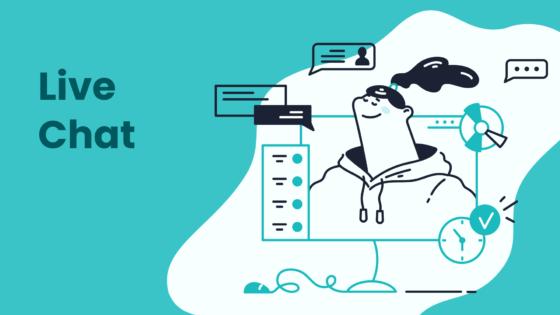
Welcome Messages for New Customers
Welcome messages set the tone for your relationship with new customers. These messages create a positive first impression and encourage engagement. For instance, a simple email saying, “Welcome to [Your Brand]! We’re thrilled to have you on board,” can make customers feel valued. Including a clear call-to-action (CTA), such as “Explore our products” or “Start your journey here,” can guide them toward their next steps.
Data shows that SMS welcome messages boast a 98% open rate, with 90% of texts read within three minutes. This immediate engagement makes them a powerful tool for customer interaction. Additionally, welcome emails are 86% more effective than regular newsletters, offering an excellent opportunity to introduce your brand and build loyalty.
Sobot’s Live Chat enhances these interactions by enabling real-time communication. You can greet customers instantly and provide personalized onboarding experiences, ensuring they feel supported from the start.
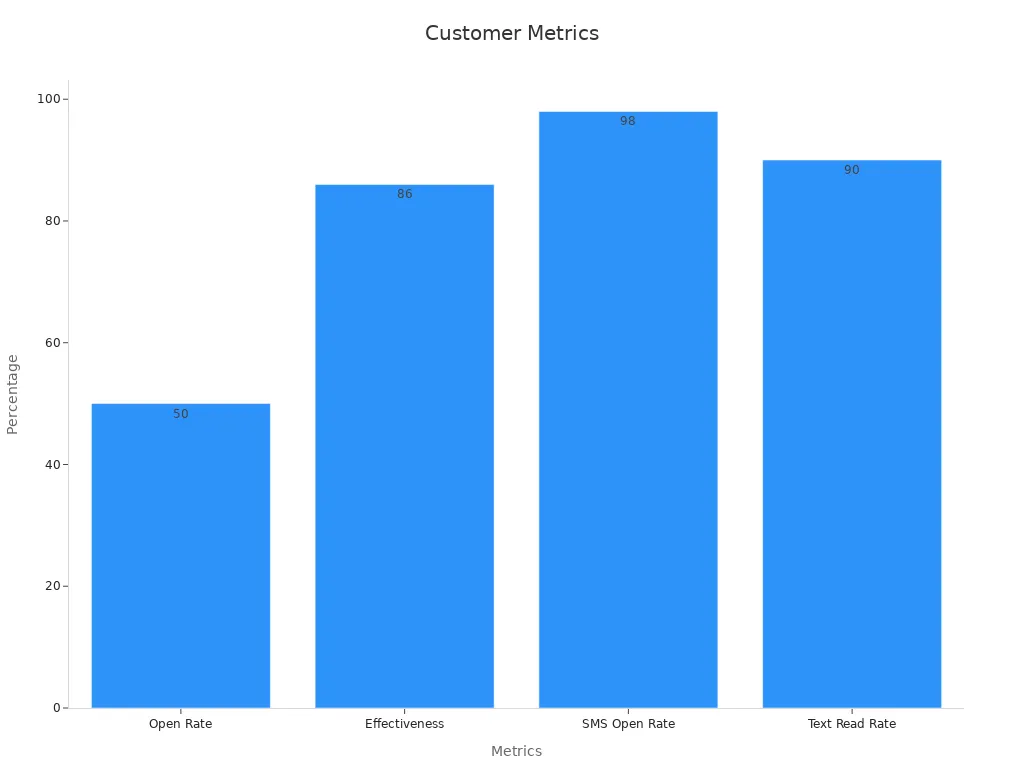
Apology Emails for Mistakes or Delays
Mistakes happen, but how you address them can make or break customer trust. Apology emails demonstrate accountability and empathy, helping to repair relationships. A well-crafted apology email might say, “We sincerely apologize for the delay in your order. We understand how frustrating this can be and are working to resolve the issue promptly.”
Studies reveal that 68% of unhappy customers will not return unless their concerns are addressed. Prompt apologies can increase satisfaction and retention rates. For example, encouraging surgeons to apologize reduced lawsuit payouts by $32,000 on average, highlighting the value of a sincere apology.
Using Sobot’s omnichannel solution, you can automate apology emails while maintaining a personal touch. This ensures timely communication across platforms, reinforcing your commitment to excellent customer service.
Refund and Return Confirmation Messages
Refund and return confirmation messages reassure customers during a potentially stressful process. These messages should provide clear updates, such as, “Your return has been processed, and your refund will be issued within 3-5 business days.” Transparency builds trust and reduces anxiety.
Timely updates about returns enhance loyalty. Metrics like return rate and processing time help evaluate the effectiveness of your refund process. Proactive communication, such as notifying customers when their refund is initiated, fosters a sense of reliability.
Sobot’s Live Chat simplifies this process by consolidating customer data into a unified workspace. Agents can quickly access order details and provide accurate updates, ensuring a seamless experience for your customers.
Follow-Up Emails After Support Requests
Follow-up emails play a crucial role in maintaining strong customer relationships. After resolving a support request, sending a follow-up message shows that you care about the customer's experience. These emails can confirm that the issue has been resolved or ask for feedback to improve your service. For example, a follow-up email might say, "We hope your issue has been resolved. Please let us know if there's anything else we can assist you with."
Using response templates for follow-up emails ensures consistency and saves time. These templates can include placeholders for customer names and case details, making the communication feel personal. For instance, a customer service email response template could say, "Hi [Customer Name], we wanted to check in regarding your recent support request about [Issue]. Is everything working as expected now?"
Follow-up emails also provide an opportunity to gather insights. Including a satisfaction survey or a simple question like, "How would you rate your experience?" can help you identify areas for improvement. Sobot's Live Chat simplifies this process by integrating feedback tools directly into your communication channels. This ensures that your follow-up emails are timely and effective.
Responses to Frequently Asked Questions (FAQs)
Responding to FAQs efficiently is essential for reducing customer inquiry durations. Pre-written response templates for FAQs allow your team to address common questions quickly and accurately. For example, when a customer asks, "What is your return policy?" a template can provide a clear and detailed answer instantly.
Businesses that use FAQ templates often see significant improvements in response times. For instance:
- Customers like Timbuk2 reduced their average response times by up to 96% using automated tools.
- Quick responses lead to higher satisfaction, fostering loyalty and repeat business.
Auto-responders and scripts further streamline the process, ensuring that customers receive immediate replies. Sobot's omnichannel solution enhances this efficiency by consolidating customer data into a unified workspace. This allows agents to select the most relevant FAQ response template, ensuring accurate and personalized answers.
By implementing these best practices, you can improve your customer service email responses. This not only saves time but also enhances the overall customer experience.
Tips for Creating and Customizing Customer Service Reply Templates
Keep the Tone Conversational and Friendly
A conversational and friendly tone can transform your customer interactions. It helps build trust and makes your brand approachable. For instance, instead of saying, "Your request has been processed," you could say, "Great news! We've processed your request and are here if you need anything else." This small change creates a positive impression.
Research supports this approach. Helpspot highlights that tone can shape a customer’s perception of your entire brand. A negative tone from one employee can tarnish the customer experience. RingCentral also emphasizes that a friendly tone helps build rapport, especially when customers interact with someone they don’t know. By adopting this tone, you create a welcoming environment that encourages effective customer communication.
Sobot’s Live Chat makes it easier to maintain this tone across channels. Its AI-powered tools guide agents in crafting responses that feel natural and engaging, ensuring a consistent customer experience.
Address Specific Customer Concerns Clearly
Clarity is essential in resolving customer issues. When you address concerns directly, you reduce confusion and build confidence. For example, if a customer asks about a delayed shipment, avoid vague replies like, "We’re looking into it." Instead, provide specifics: "Your order is delayed due to high demand. It will arrive by [date]."
Customer feedback highlights the importance of this practice. Generic responses often lead to low engagement, with only 14% of customers responding to surveys. However, personalized and clear communication significantly increases response rates. Clearly stating the purpose of your message, such as resolving an issue or improving service, encourages customers to engage.
Sobot’s omnichannel solution consolidates customer data, enabling agents to provide precise and tailored answers. This approach ensures effective customer communication and faster resolution of issues.
Use Personalization Tokens (e.g., Customer Name)
Personalization enhances engagement and makes your replies feel genuine. Adding tokens like the customer’s name or order details can turn a generic message into a personalized response. For instance, instead of saying, "Your refund has been processed," you could say, "Hi [Customer Name], your refund for Order #[Order Number] has been processed."
Data underscores the impact of personalization. Campaign Monitor reports that personalized subject lines can boost open rates by up to 26%. A case study from NielsenIQ revealed that personalized messaging led to 258 additional meetings and $8 million in new pipeline over six months. These results show how personalization drives engagement and business growth.
Sobot’s Live Chat simplifies this process. Its AI tools analyze customer data in real time, allowing agents to select the most relevant templates and personalize them effortlessly. This ensures every interaction feels unique while maintaining efficiency.
Test Templates for Effectiveness and Clarity
Testing your customer service reply templates ensures they deliver the desired results. A well-tested template improves communication and reduces misunderstandings. Start by using templates in real scenarios. Observe how customers respond and whether their issues get resolved quickly. For example, if a refund confirmation template causes confusion, you may need to revise its wording.
Gather feedback from your team and customers. Ask agents if the templates are easy to use and effective. Use customer surveys to measure satisfaction after interactions. For instance, a simple question like, "Did this response address your concern?" can provide valuable insights. Analyze metrics such as response time and resolution rates to identify areas for improvement.
A/B testing can also help. Create two versions of a template and compare their performance. For example, test different tones or levels of detail in your apology emails. Tools like Sobot Live Chat simplify this process by offering built-in analytics. These insights help you refine your templates for maximum clarity and effectiveness.
Tip: Regular testing ensures your templates stay aligned with customer expectations and business goals.
Regularly Update Templates to Stay Relevant
Customer needs and preferences evolve over time. Regularly updating your templates ensures they remain effective and relevant. Review your templates periodically to check for outdated information. For example, if your return policy changes, update the related templates immediately.
Monitor industry trends and customer feedback. If customers frequently ask new questions, create templates to address them. For instance, during the rise of online shopping, many businesses added templates for tracking orders. Sobot’s omnichannel solution makes it easy to identify emerging trends by consolidating customer inquiries across platforms.
Incorporate new technologies and tools into your templates. For example, Sobot Live Chat allows you to add AI-powered personalization, making your responses more engaging. Regular updates also help maintain your brand voice. Ensure your templates reflect your company’s values and tone, even as your business grows.
Note: Keeping templates up-to-date shows customers that you value their time and strive to meet their expectations.
Best Practices for Implementing Customer Service Reply Templates
Train Customer Service Teams on Proper Usage
Training your team is essential for maximizing the benefits of customer service reply templates. When agents understand how to use templates effectively, they can respond to inquiries faster and with greater accuracy. Start by introducing the purpose of templates and demonstrating their role in improving communication. For example, show how a refund confirmation template can save time while maintaining professionalism.
Interactive training sessions can help agents practice using templates in real scenarios. Role-playing exercises, where team members handle mock customer inquiries, can build confidence and ensure consistency. Additionally, provide a guide that outlines when and how to customize templates. This ensures that responses remain relevant and personalized.
Sobot’s omnichannel solution simplifies this process by consolidating templates into a unified workspace. Agents can access pre-written responses quickly, reducing the learning curve and improving efficiency.
Leverage Automation Tools for Efficiency
Automation tools enhance the efficiency of customer service reply templates by streamlining repetitive tasks. For instance, help desk software centralizes inquiries from various channels, allowing agents to respond faster. Automation also handles initial replies, such as acknowledging receipt of a customer’s email, which reduces response times significantly.
| Evidence Type | Description |
|---|---|
| Enhanced agent performance | Automation tools provide agents with relevant information, leading to quicker and more accurate responses. |
| Cost reduction | Automating repetitive tasks allows agents to focus on complex issues, reducing overall service costs. |
| 24/7 availability | Self-service options increase customer satisfaction by providing help whenever needed. |
Sobot’s Live Chat integrates AI-powered tools that analyze customer data in real time. This enables agents to select the most relevant templates, ensuring both speed and personalization. By leveraging automation, you can improve operational efficiency and enhance the overall customer experience.
Monitor Customer Feedback to Improve Templates
Customer feedback is a valuable resource for refining your reply templates. Surveys and satisfaction ratings can reveal common complaints or areas where communication falls short. For example, if customers frequently express confusion about your return policy, updating the related template can address this issue.
- Real feedback helps improve the customer experience by identifying gaps in communication.
- Satisfaction surveys track trends, allowing you to adjust templates proactively.
- Addressing negative themes prevents customer turnover and enhances trust.
Sobot’s analytics tools simplify this process by consolidating feedback across channels. These insights help you identify patterns and make data-driven improvements to your templates. Regularly monitoring feedback ensures your communication stays relevant and effective.
Ensure Templates Align with Brand Voice and Values
Your brand voice reflects your identity and values. Ensuring that customer service reply templates align with this voice strengthens trust and recognition. For example, if your brand emphasizes friendliness, your templates should use warm and approachable language. On the other hand, a professional tone suits brands in industries like finance or healthcare.
Maintaining consistency in your templates offers measurable benefits:
- 67% of customers say they will only continue buying from brands they trust.
- Consistent brand voice can increase revenue by 23%.
- Unified messaging across touchpoints fosters recognition and reliability.
Templates that reflect your brand voice also help your team deliver responses that feel authentic. For instance, a company like OPPO, which values innovation, uses templates that highlight cutting-edge solutions. Sobot’s omnichannel solution supports this by consolidating templates into a unified workspace. This ensures that every interaction reflects your brand’s identity, regardless of the channel.
Tip: Regularly review your templates to ensure they align with your evolving brand values and customer expectations.
Balance Automation with Human Interaction
Automation improves efficiency, but customers still value human interaction. Studies show that 89% of customers want to know if they are speaking with a human or AI. Additionally, 80% believe human validation of AI responses is essential. These findings highlight the importance of balancing automation with empathy.
For example, automated tools like Sobot Live Chat can handle repetitive queries, such as FAQs, freeing agents to focus on complex issues. However, when a customer raises a sensitive concern, human agents can step in to provide personalized support. This approach not only resolves issues effectively but also builds trust.
Transparency is key. Inform customers when they are interacting with AI and ensure seamless transitions to human agents when needed. This balance enhances satisfaction while addressing ethical concerns about AI, which 74% of customers express.
Note: Combining automation with human interaction ensures efficiency without compromising empathy.
How Sobot and Live Chat Enhance Customer Service Reply Templates
Leveraging Sobot's Omnichannel Solution for Seamless Integration
Sobot's omnichannel solution simplifies how you manage customer interactions across multiple platforms. By unifying communication channels like email, social media, and live chat into a single workspace, it ensures your team can access all customer data in one place. This integration eliminates the need to switch between tools, saving time and reducing errors.
For example, when a customer submits a query through social media, your team can instantly access their history and respond using a pre-written reply template. This seamless process improves efficiency and ensures consistent communication. Businesses using Sobot's omnichannel solution have reported significant improvements in key metrics, as shown below:
| Case Study Description | Improvement Metrics |
|---|---|
| Reduced inbound discussion volume | 20% |
| Increased positive feedback | 96%+ |
| Correct answers provided | 80%+ |
| Customer satisfaction | 95%+ |
| Self-service question resolution | 22.2% |
This streamlined approach not only enhances operational efficiency but also boosts customer satisfaction.
Using Sobot Live Chat for Real-Time Customer Interactions
Sobot Live Chat empowers you to engage with customers instantly. Its real-time capabilities allow your team to address inquiries as they arise, reducing wait times and improving the overall experience. For instance, when a customer asks about a product feature, your agents can use pre-written templates to provide immediate and accurate answers.
The platform also supports rich messaging options, such as images and links, making your responses more engaging. Additionally, Sobot Live Chat integrates AI-powered tools to suggest the most relevant templates based on the context of the conversation. This ensures that every interaction feels personalized and efficient.
A bar chart below illustrates how Sobot's solutions have improved customer service metrics for various businesses:
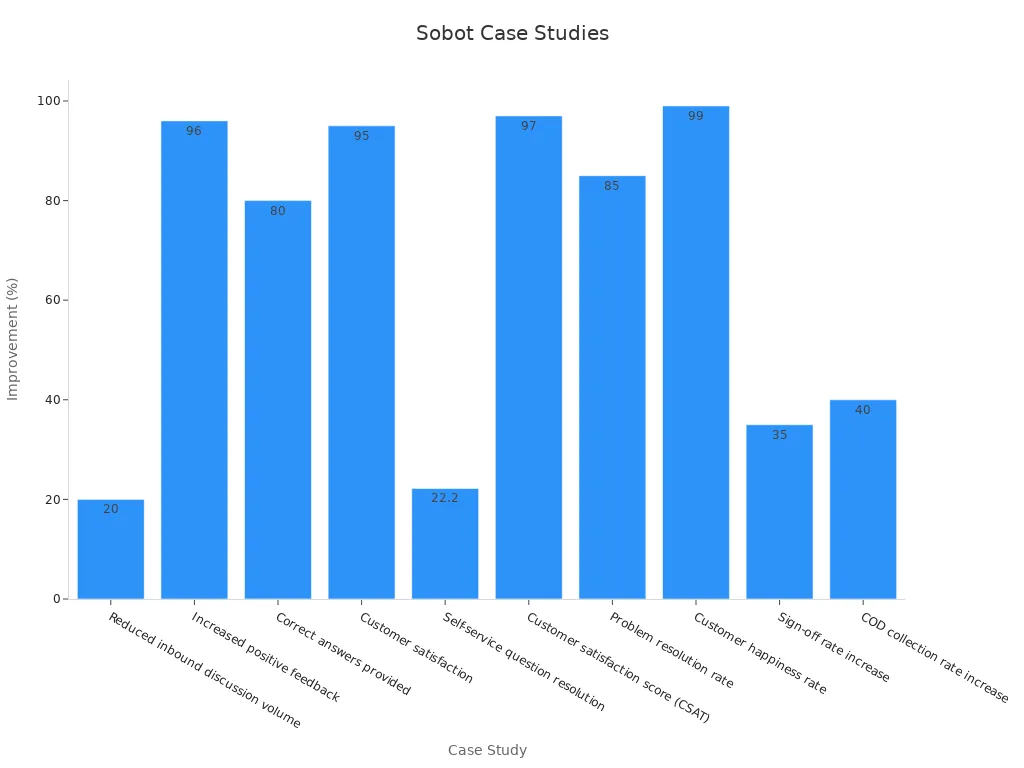
AI-Powered Tools for Personalization and Efficiency
Sobot's AI-powered tools take personalization to the next level. These tools analyze customer data in real time, enabling your team to select the most relevant reply templates. For example, if a customer inquires about a delayed shipment, the AI can suggest a template that includes their order details and an estimated delivery date.
This level of personalization builds trust and enhances the customer experience. It also reduces the cognitive load on your team, allowing them to focus on more complex issues. Businesses using Sobot's AI tools have seen a 35% increase in sign-off rates and a 40% boost in cash-on-delivery collection rates. These results highlight the efficiency and effectiveness of integrating AI into your customer service tools.
By leveraging Sobot's advanced features, you can provide faster, more accurate, and highly personalized responses, ensuring your customers feel valued and supported.
Analytics and Insights to Optimize Template Usage
Analytics plays a crucial role in refining your customer service reply templates. By analyzing performance metrics, you can identify which templates work best and where improvements are needed. For example, tracking response times and resolution rates helps you understand how quickly your team addresses customer inquiries. If a specific template consistently leads to faster resolutions, it indicates its effectiveness.
Sobot’s Live Chat includes built-in analytics that evaluates over 150 indicators. These insights allow you to monitor key metrics like customer satisfaction and template usage frequency. For instance, if a refund confirmation template receives high satisfaction ratings, you can replicate its structure for other responses. Additionally, Sobot’s customizable data reports help you make informed decisions to optimize your communication strategies.
Feedback collection is another valuable tool. Surveys embedded in follow-up emails can reveal how customers perceive your responses. For example, a simple question like, “Did this answer resolve your issue?” provides actionable insights. Sobot’s omnichannel solution consolidates this feedback, making it easier to identify trends and adjust templates accordingly.
Tip: Regularly review analytics to ensure your templates align with customer expectations and business goals. This proactive approach enhances efficiency and satisfaction.
Case Study: How OPPO Improved Customer Service with Sobot
OPPO, a global leader in smart devices, faced challenges during peak shopping periods. High inquiry volumes overwhelmed their customer service team, leading to delays and dissatisfaction. To address this, OPPO partnered with Sobot to implement a chatbot and ticketing system.
Sobot’s chatbot handled repetitive queries, freeing agents to focus on complex issues. This human-machine collaboration improved efficiency. Additionally, Sobot optimized OPPO’s knowledge base, reducing maintenance efforts by 90%. The integration of global customer channels and business systems eliminated data fragmentation, enabling seamless service.
The results were remarkable. OPPO achieved an 83% chatbot resolution rate and a 94% positive feedback rate. These improvements contributed to a 57% increase in repurchase rates. By leveraging Sobot’s solutions, OPPO transformed its customer service operations, setting a benchmark for efficiency and satisfaction.
Note: OPPO’s success demonstrates the impact of combining advanced tools like Sobot with a strategic approach to customer service.
Customer service reply templates simplify communication and improve efficiency. They help you deliver consistent, fast, and personalized responses, which enhances the overall experience for your customer. Tools like Sobot Live Chat take these templates to the next level by integrating AI-powered personalization and real-time analytics. This ensures that every interaction feels seamless and professional. By adopting and customizing these templates, you can streamline your operations and build stronger relationships with your audience. Start leveraging these tools today to elevate your customer service strategy.
FAQ
What are customer service reply templates?
Customer service reply templates are pre-written responses for common customer inquiries. They save time, ensure consistency, and improve communication. For example, a refund policy template provides quick, accurate answers. Tools like Sobot Live Chat enhance these templates with AI-powered personalization and omnichannel support, making responses faster and more effective.
How do reply templates improve customer satisfaction?
Reply templates reduce response times and ensure clear communication. Customers appreciate quick, accurate answers. For instance, businesses using Sobot Live Chat report a 38% increase in conversion rates due to personalized and timely responses. This builds trust and fosters loyalty, enhancing overall satisfaction.
Can reply templates be personalized?
Yes, reply templates can include placeholders like [Customer Name] or [Order Number]. Sobot Live Chat uses AI to analyze customer data in real time, suggesting the most relevant templates. This ensures every interaction feels unique while maintaining efficiency, creating a personalized experience without extra effort.
How do I create effective reply templates?
Focus on clarity and relevance. Use a friendly tone and address specific concerns. Test templates for effectiveness and update them regularly. Sobot’s analytics tools help you monitor performance and refine templates. For example, tracking response times can reveal which templates need improvement.
Why should I use Sobot for customer service templates?
Sobot offers tools like Live Chat and an omnichannel solution to optimize template usage. Features include AI-powered personalization, real-time analytics, and seamless integration across platforms. Businesses using Sobot report higher satisfaction rates and improved efficiency, making it a trusted choice for enhancing customer service.
See Also
Enhancing Customer Satisfaction Through Effective Live Chat Strategies
The 10 Leading Customer Service Software Solutions for 2024
Increasing Efficiency with AI-Driven Customer Service Solutions
